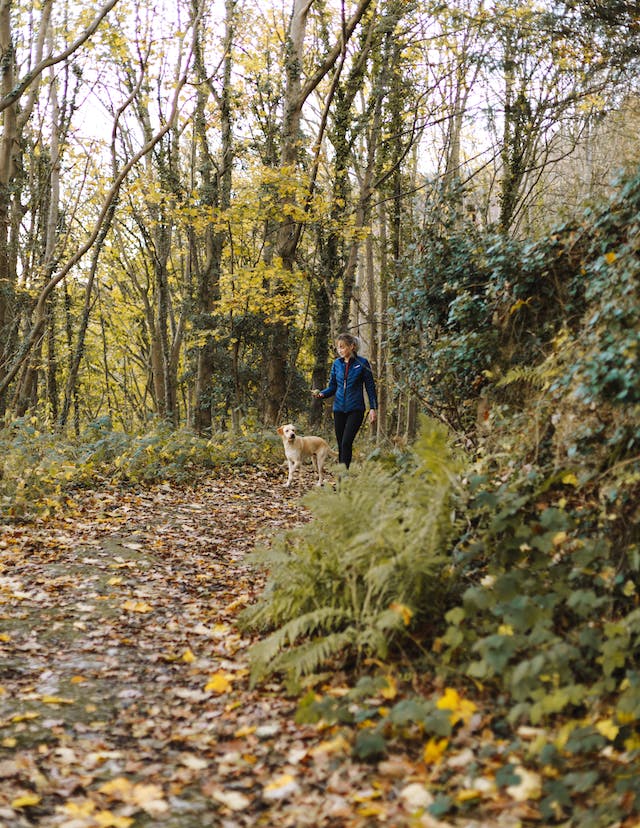
In the bustling chaos of modern life, finding moments of stillness and tranquility can often feel like an unattainable luxury. Yet, amidst the flurry of daily responsibilities and constant distractions, there exists a simple practice that can anchor our restless minds and reconnect us with the present moment: walking meditation.
Throughout the ages, wise sages and spiritual seekers have recognized the profound power of walking as a means to find inner peace and restore harmony to our lives. Unlike traditional meditation, walking meditation seamlessly integrates into our daily routine, allowing us to cultivate mindfulness right in the midst of our busy schedules.
Walking meditation is a gentle invitation to slow down, to step away from the incessant race against time, and to savor the exquisite beauty of each passing moment. It offers us an opportunity to find solace in the rhythm of our own footsteps, to connect deeply with nature, and to rediscover the forgotten art of simply being.
Understanding Walking Meditation
Walking meditation, often referred to as “Kinhin” in Zen Buddhism, is a contemplative practice that involves walking slowly and mindfully. It’s a way to cultivate serenity and presence, where each step becomes a mindful act. To truly understand walking meditation, it’s important to explore its essence and historical roots.
What is Walking Meditation
Walking meditation is a form of mindfulness practice that combines the physical activity of walking with a focused, meditative state of mind. Instead of rushing from one place to another, in walking meditation, each step is taken with deliberate awareness and intention.
The core idea is to bring attention to the act of walking itself, making it a moment of meditation. As you walk, you let go of distractions and worries, and you fully engage with the experience of moving your body through space.
Historical Roots of Walking Meditation
Walking meditation has deep historical roots in Buddhist traditions, particularly Zen Buddhism. Monks and practitioners in these traditions incorporated walking meditation as part of their daily routines. It was a way to extend the mindfulness cultivated during seated meditation into their movements.
This practice emphasizes the idea that meditation isn’t limited to sitting quietly; it can be integrated into daily activities, including walking. Over time, walking meditation has transcended its Buddhist origins and is now practiced in various forms by people of different backgrounds seeking peace and presence in their lives.
Connection Between Mindfulness and Walking Meditation
Walking meditation is all about mindfulness. It’s a practice that encourages you to be fully present in the moment. As you walk, you pay attention to your breath, the sensations in your body, and the act of taking each step. This intense focus helps quiet the mind and reduce mental chatter.
By being present and aware while walking, you become more in tune with your surroundings and yourself. The goal is not to get somewhere quickly but to enjoy the journey itself.

In this way, walking meditation embodies the essence of mindfulness – being fully alive in the present moment.
Benefits of Walking Meditation
Walking meditation offers a range of benefits for both the mind and the body, making it a valuable practice for those seeking serenity and well-being. Let’s explore these advantages in more detail.
Mental Benefits:
- Stress Reduction: Walking meditation encourages you to slow down and be present, which can significantly reduce stress. The act of walking mindfully helps calm the mind and alleviate the pressures of daily life.
- Improved Focus and Presence: As you practice walking meditation, you learn to focus your attention on each step, your breath, and your surroundings. This can enhance your ability to concentrate, both during meditation and in other aspects of your life.
- Enhanced Emotional Well-Being: Regular practice of walking meditation can boost your emotional well-being. It can help you better manage your emotions, become more patient, and cultivate a positive outlook on life. This emotional balance can lead to a greater sense of serenity.
Physical Benefits:
- Promoting Physical Activity and Fitness: While not as physically demanding as some other exercises, walking meditation involves movement. Over time, it can contribute to better physical fitness, particularly if practiced regularly.
- Posture Improvement and Balance: Walking meditation places an emphasis on maintaining an upright posture and balance. This can help improve your overall body alignment and posture, reducing physical discomfort and enhancing your physical well-being.
- Enhancing Mind-Body Connection: The practice of walking meditation strengthens the connection between your body and mind. By focusing on the sensations in your body while walking, you become more in tune with how your body feels and responds to your thoughts and emotions.
The beauty of walking meditation is that it can provide a range of mental and physical benefits. It’s a practice that encourages stress reduction, heightened focus, and emotional balance. Additionally, it promotes physical activity, helps improve posture and balance, and deepens the connection between the mind and body. These combined advantages make walking meditation a valuable tool for those seeking serenity and well-being in their lives.
How to Practice Walking Meditation

Practicing walking meditation involves a deliberate and mindful approach to walking. It’s about turning each step into a moment of serenity and awareness. Here’s a step-by-step guide on how to practice walking meditation and integrate it into your daily life.
Step-by-Step Guide to Walking Meditation:
- Choosing a Peaceful Location:
- Find a quiet, safe place for your walking meditation. It could be a garden, a park, or any open space where you can walk without distractions. The idea is to be in a peaceful environment where you can focus your attention on your practice.
- Body Posture and Alignment:
- Stand upright with your back straight but not rigid. Relax your shoulders and let your arms hang naturally by your sides. You can clasp your hands in front or let them swing gently. Your gaze should be directed a few steps ahead, but not fixed on anything specific.
- Mindful Walking Techniques:
- Start walking slowly, taking each step mindfully. As you lift your foot, be aware of the lifting motion. As you move your foot forward, notice the movement. When your foot touches the ground, feel the contact. Continue this process with each step.
- Pay attention to your breath. Coordinate your breath with your steps. For example, you can take one step for each inhale and another for each exhale. This synchronizes your breath and movement, enhancing mindfulness.
Integrating Walking Meditation into Daily Life:
During Commutes and in Urban Environments:

You can practice walking meditation during your daily commute or in busy urban environments. Even amidst the hustle and bustle, you can slow down and walk mindfully. Use traffic lights or brief stops to take a few mindful steps.
Nature Walks and Outdoor Settings:
Taking a walk in nature is an ideal setting for walking meditation. The natural surroundings provide a calming backdrop, and you can truly connect with the environment. Focus on the sounds of birds, the rustling of leaves, and the feeling of the earth beneath your feet.
Combining Walking Meditation with Other Activities:
You can combine walking meditation with other activities like walking your dog, taking a break from work, or walking to a nearby store. These brief moments of mindfulness can add serenity to your day.
Challenges and Solutions
While walking meditation is a powerful practice for finding serenity in every step, it is not without its challenges. Understanding and addressing these challenges is essential to fully embrace the practice and enjoy its benefits.
- Restlessness and Impatience: It’s common to feel restless or impatient when starting with walking meditation. The slow pace and focused attention might be challenging at first.
- Distractions: External distractions like noise, or internal distractions like wandering thoughts, can interrupt your practice and make it difficult to maintain focus.
- Incorporating It into Daily Life: Integrating walking meditation into your daily routine can be challenging, especially if you have a busy schedule.
Strategies for Overcoming Challenges:
Restlessness and Impatience
Recognize that restlessness and impatience are natural when beginning any mindfulness practice, including walking meditation. Be patient with yourself and acknowledge these feelings without judgment. Over time, with consistent practice, you’ll likely find more ease in walking mindfully.
Distractions
Instead of seeing distractions as obstacles, use them as opportunities to practice mindfulness. If your mind wanders, gently bring your focus back to your steps. If external noises disrupt your practice, acknowledge them and refocus on your walk. This process of returning to the present moment is an essential part of the practice.

Incorporating It into Daily Life
Start by dedicating a few minutes to walking meditation, perhaps during your breaks or in the morning. As you become more comfortable with the practice, gradually extend the duration. Find opportunities within your daily routine to walk mindfully. It can be during your commute, while walking the dog, or while strolling in the park. The key is to start small and build from there.
C. The Importance of Patience and Persistence:
It’s crucial to understand that challenges are a natural part of any practice, and they don’t diminish the benefits of walking meditation. In fact, they can be opportunities for growth and self-discovery. Patience with yourself and persistence in practice are key.
Embrace the journey of walking meditation, understanding that the challenges you encounter along the way are part of the path to finding serenity in every step. With time and dedication, these challenges will become stepping stones to a more peaceful and mindful life.
Practicing walking meditation involves a deliberate approach to walking, where each step is taken with awareness and intention. It can be practiced in a quiet, peaceful environment or integrated into daily routines in various settings. Whether you’re in a park, on a nature walk, or during your daily commute, walking meditation allows you to find serenity in every step, promoting mindfulness and a deeper connection with the present moment.
